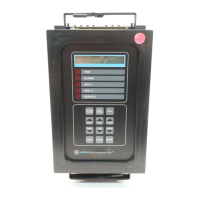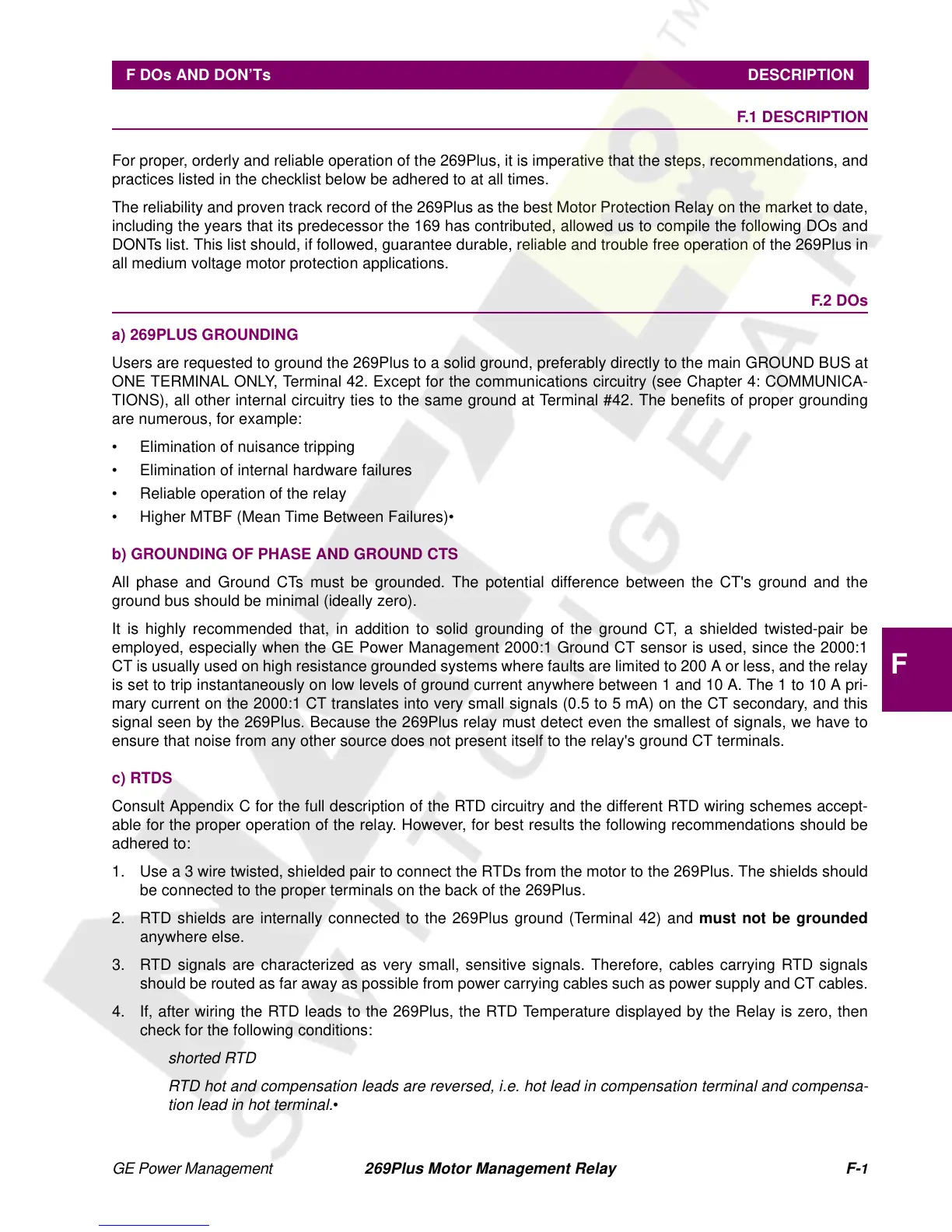GE Power Management 269Plus Motor Management Relay F-
1
F DOs AND DON’Ts DESCRIPTION
F
APPENDIX FF DOs AND DON’Ts F.1 DESCRIPTION
For proper, orderly and reliable operation of the 269Plus, it is imperative that the steps, recommendations, and
practices listed in the checklist below be adhered to at all times.
The reliability and proven track record of the 269Plus as the best Motor Protection Relay on the market to date,
including the years that its predecessor the 169 has contributed, allowed us to compile the following DOs and
DONTs list. This list should, if followed, guarantee durable, reliable and trouble free operation of the 269Plus in
all medium voltage motor protection applications.
F.2 DOs
a) 269PLUS GROUNDING
Users are requested to ground the 269Plus to a solid ground, preferably directly to the main GROUND BUS at
ONE TERMINAL ONLY, Terminal 42. Except for the communications circuitry (see Chapter 4: COMMUNICA-
TIONS), all other internal circuitry ties to the same ground at Terminal #42. The benefits of proper grounding
are numerous, for example:
• Elimination of nuisance tripping
• Elimination of internal hardware failures
• Reliable operation of the relay
• Higher MTBF (Mean Time Between Failures)•
b) GROUNDING OF PHASE AND GROUND CTS
All phase and Ground CTs must be grounded. The potential difference between the CT's ground and the
ground bus should be minimal (ideally zero).
It is highly recommended that, in addition to solid grounding of the ground CT, a shielded twisted-pair be
employed, especially when the GE Power Management 2000:1 Ground CT sensor is used, since the 2000:1
CT is usually used on high resistance grounded systems where faults are limited to 200 A or less, and the relay
is set to trip instantaneously on low levels of ground current anywhere between 1 and 10 A. The 1 to 10 A pri-
mary current on the 2000:1 CT translates into very small signals (0.5 to 5 mA) on the CT secondary, and this
signal seen by the 269Plus. Because the 269Plus relay must detect even the smallest of signals, we have to
ensure that noise from any other source does not present itself to the relay's ground CT terminals.
c) RTDS
Consult Appendix C for the full description of the RTD circuitry and the different RTD wiring schemes accept-
able for the proper operation of the relay. However, for best results the following recommendations should be
adhered to:
1. Usea3wiretwisted,shieldedpairtoconnecttheRTDsfromthemotortothe269Plus.Theshieldsshould
be connected to the proper terminals on the back of the 269Plus.
2. RTD shields are internally connected to the 269Plus ground (Terminal 42) and must not be grounded
anywhere else.
3. RTD signals are characterized as very small, sensitive signals. Therefore, cables carrying RTD signals
should be routed as far away as possible from power carrying cables such as power supply and CT cables.
4. If, after wiring the RTD leads to the 269Plus, the RTD Temperature displayed by the Relay is zero, then
check for the following conditions:
shorted RTD
RTD hot and compensation leads are reversed, i.e. hot lead in compensation terminal and compensa-
tion lead in hot terminal.
•

